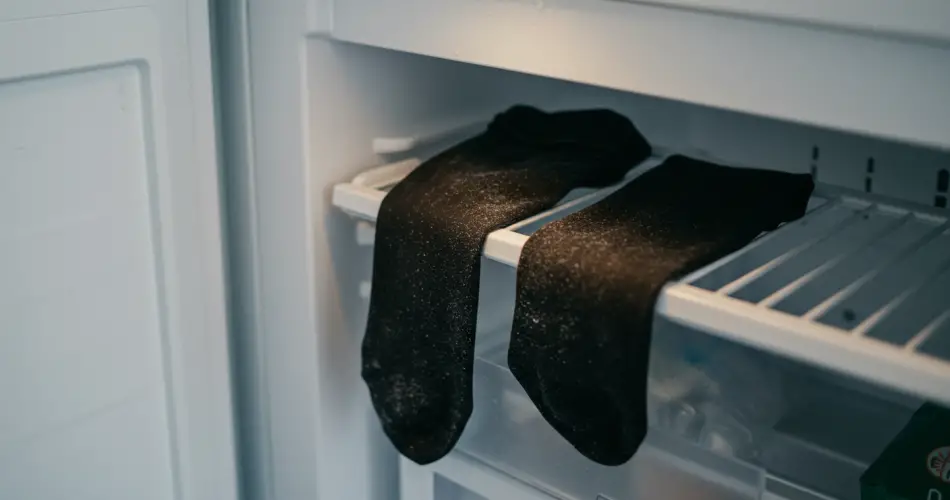Tights, also known as pantyhose or stockings, are a wardrobe staple for many people. They enhance outfits, add a touch of elegance, and are versatile enough for nearly any occasion. Available in a wide range of colors, styles, and denier counts, tights can either create a sheer, barely-there look or a more opaque and formal appearance. However, one common problem plagues nearly everyone who wears them: tights tear or run easily, often ruining an otherwise perfect outfit.
The good news is that there are simple and effective ways to prolong the life of your tights, and one of the most surprising tricks involves your freezer. Before we dive into the method, let’s explore why tights are so delicate and what can cause them to tear.
Understanding Tights and Their Fragility
Tights are made from thin fibers, often nylon or a nylon blend, which makes them prone to snags, runs, and holes. The degree of sheerness is measured in denier, a unit that indicates fiber thickness. The higher the denier number, the thicker and more opaque the tights. Conversely, lower-denier tights are sheer, lightweight, and much easier to tear.
Tights can be worn with skirts, dresses, or shorts, but certain factors increase the likelihood of damage:
-
Wearing tights that are too tight for your size
-
Rough or unkempt fingernails
-
Jewelry, such as rings or bracelets, that can catch the fibers
-
Shoes with zippers or rough edges that can snag the material
Choosing slightly larger tights, avoiding sharp objects, and pairing them with smooth accessories can help, but these precautions alone may not be enough for extremely delicate tights. That’s where the freezer trick comes in.
The Freezer Method: How It Works
It may sound unusual, but freezing your tights can significantly increase their strength and resistance to runs. The process works because the extreme cold temporarily tightens the fibers, making them less prone to snagging or tearing. This method is especially useful for sheer, low-denier tights that are notoriously fragile.
Here’s a step-by-step guide to try this method at home:
-
Preparation
When you buy new tights, remove them from their packaging and give them a gentle rinse in clean, cold water. Do not use soap or detergent, as this could weaken the fibers. -
Bag and Freeze
Place the damp tights in a plastic bag and seal it tightly. Ensure there’s no air inside to prevent frost damage. Then, place the bag in your freezer and leave it overnight. -
Thawing and Drying
The next day, remove the tights from the freezer. Let them thaw naturally at room temperature and hang them to dry. Avoid direct heat sources, such as radiators or hairdryers, as sudden heat may damage the fibers. -
Ready to Wear
Once completely dry, the tights will feel slightly firmer and more resilient. The freezing process has tightened the fibers, reducing the risk of runs and extending the life of your tights.
This simple technique can make a noticeable difference, especially for tights that are sheer or have a low denier count. It’s a practical, cost-effective way to preserve delicate hosiery without spending extra money on thicker or more expensive brands.
Additional Tips to Protect Your Tights
While the freezer method is highly effective, there are additional habits that can help prevent damage:
-
Hydrate Your Hands: Dry or rough skin can catch the fibers when putting on tights. Applying a light hand cream before dressing can reduce this risk.
-
Mind Your Nails: Ensure your nails are smooth and well-trimmed to avoid accidental snags.
-
Remove Jewelry: Rings, bracelets, and watches can tear the delicate fibers, so take them off before dressing.
-
Proper Storage: Keep tights in a separate drawer or box to prevent them from snagging on other items. Rolling them gently rather than folding can also reduce tension on the fibers.
Why This Method Is Gaining Popularity
The freezer technique has been embraced by fashion enthusiasts and professionals alike because it’s simple, requires no special equipment, and provides visible results in durability. Unlike traditional methods, which focus only on careful handling or using thicker fabrics, freezing tights works on a molecular level, tightening the fibers and making them stronger.
This method is particularly helpful for:
-
Sheer, low-denier tights: These are the most prone to tearing and can benefit greatly from fiber tightening.
-
Expensive hosiery: Designer or premium tights can be preserved longer, reducing replacement costs.
-
Special occasions: Ensuring your tights remain intact for formal events or performances.
Final Thoughts
Tights are delicate but essential items in many wardrobes. By understanding the factors that cause runs and snags and employing simple preventive techniques, you can extend their lifespan significantly. The freezer trick is an innovative, easy, and effective way to strengthen tights, particularly sheer varieties that are most vulnerable.
Remember to rinse the tights, bag them, freeze overnight, and let them dry naturally. Combined with careful handling—hydrated hands, smooth nails, and avoiding jewelry—you can enjoy longer-lasting tights without sacrificing style or comfort.
So next time you pick up a new pair of delicate tights, consider giving them a night in the freezer. It may sound unusual, but this small step can save you money, prevent frustration, and keep your hosiery looking perfect for longer.



